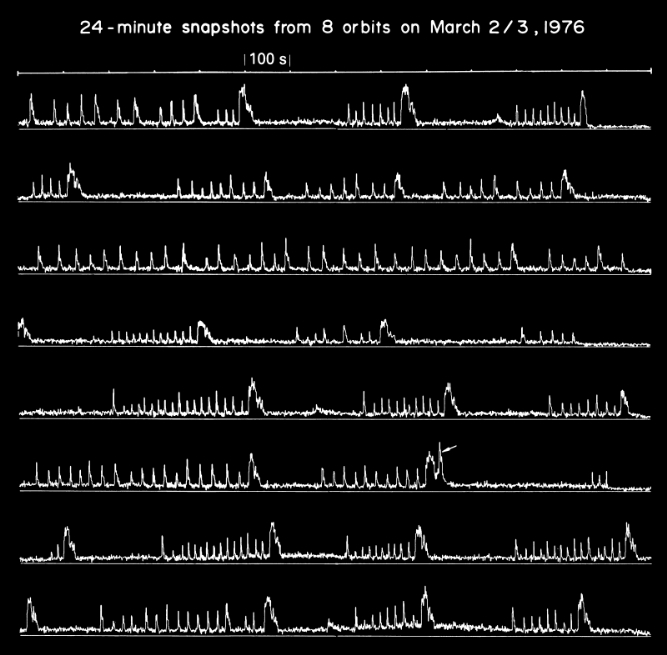For all those years our group of professors, post docs, and students, both graduate and undergraduate, directed its operation from M.I.T. Within a couple of hours of an observation we received "quick-look" data by dedicated line from the NASA control center, and a few days later the complete observation and engineering data on magnetic tape. We all took turns as duty scientists during the 24-7 operation.
Walter Lewin was duty scientist one day when one of the SAS-3 detectors scanned slowly over a region near the galactic center. On the chart of quick-look data he noticed a sequence of several short X-ray bursts separated by about 20 seconds. Lewin flew into action, and like a terrier chasing a rabbit to its hole, made quick calculations and sent instructions to reverse the scan by a calculated amount, which landed the view field of the detector squarely on one of the most remarkable X-ray sources that has ever been observed. Lewin named it "The Rapid Burster." It's an accretion-powered X-ray binary at a distance of more than ten thousand light years. During extended periods of activity it emits quasi-periodic sequences of short X-ray bursts terminated by a giant burst before the next sequence begins. The explanation is that the short bursts are emitted when blobs of hydrogen and helium fall to the surface of the neutron star from an unstable ring of ionized gas in orbit a thousand kilometers above. The accreted matter piles up until the pressure at the base triggers a nuclear fusion explosion, resulting in emission of a giant X-ray burst.


